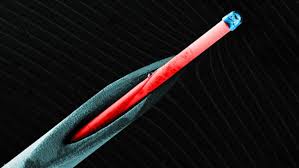
Breaking News
 SILVER CRASHES TO $75 - But China Is Paying $89 (Ghost Week Trap)
SILVER CRASHES TO $75 - But China Is Paying $89 (Ghost Week Trap)
 Firegate: Democrat LA Mayor Karen Bass' Admin Altered Palisades Fire Report & Deleted Evidence
Firegate: Democrat LA Mayor Karen Bass' Admin Altered Palisades Fire Report & Deleted Evidence
 BREAKING: Candace Owens' Massive Mind Control House of Cards is Now Collapsing in Real Time
BREAKING: Candace Owens' Massive Mind Control House of Cards is Now Collapsing in Real Time
 We Cannot Build an Economy on Lies
We Cannot Build an Economy on Lies
Top Tech News
 EngineAI T800: Born to Disrupt! #EngineAI #robotics #newtechnology #newproduct
EngineAI T800: Born to Disrupt! #EngineAI #robotics #newtechnology #newproduct
 This Silicon Anode Breakthrough Could Mark A Turning Point For EV Batteries [Update]
This Silicon Anode Breakthrough Could Mark A Turning Point For EV Batteries [Update]
 Travel gadget promises to dry and iron your clothes – totally hands-free
Travel gadget promises to dry and iron your clothes – totally hands-free
 Perfect Aircrete, Kitchen Ingredients.
Perfect Aircrete, Kitchen Ingredients.
 Futuristic pixel-raising display lets you feel what's onscreen
Futuristic pixel-raising display lets you feel what's onscreen
 Cutting-Edge Facility Generates Pure Water and Hydrogen Fuel from Seawater for Mere Pennies
Cutting-Edge Facility Generates Pure Water and Hydrogen Fuel from Seawater for Mere Pennies
 This tiny dev board is packed with features for ambitious makers
This tiny dev board is packed with features for ambitious makers
 Scientists Discover Gel to Regrow Tooth Enamel
Scientists Discover Gel to Regrow Tooth Enamel
 Vitamin C and Dandelion Root Killing Cancer Cells -- as Former CDC Director Calls for COVID-19...
Vitamin C and Dandelion Root Killing Cancer Cells -- as Former CDC Director Calls for COVID-19...
 Galactic Brain: US firm plans space-based data centers, power grid to challenge China
Galactic Brain: US firm plans space-based data centers, power grid to challenge China
Tiny 3D-printed medical camera could be deployed from inside a syringe

Getting inside the human body to have a look around is always going to be invasive, but that doesn't mean more can't be done to make things a little more comfortable. With this goal in mind, German researchers have developed a complex lens system no bigger than a grain of salt that fits inside a syringe. The imaging tool could make for not just more productive medical imaging, but tiny cameras for everything from drones to slimmer smartphones.
Scientists from the University of Stuttgart built their three-lens camera using a new 3D printing technique. They say their new approach offers sub-micrometer accuracy that makes it possible to 3D print optical lens systems with two or more lenses for the first time. Their resulting multi-lens system opens up the possibility of correcting for aberration (where a lens cannot bring all wavelengths of color to the same focal plane), which could enable higher image quality from smaller devices.
Here's how they did it. Using a femtosecond laser, where the pulse durations were shorter than 100 femtoseconds (a femtosecond is one quadrillionth of a second), they blasted a light-sensitive material resting on a glass substrate. Two photons are absorbed by the material, which exposes it and crosslinks polymers within. Unexposed material is then washed away with a solvent, leaving behind the hardened, crosslinked polymer used to form the optical element.
The team used this approach to print imaging components for optical microscopes with a diameter and height of 125 micrometers, and then attached them to the end of a 5.6-ft (1.7-m) optical fiber the width of two human hairs. The camera on the end of this small endoscope is capable of focusing on images from a distance of 3 mm (0.12 in). The team says the entire imaging system fits comfortably inside a standard syringe needle, which raises the possibility of delivering it to directly to organs, and even the brain.







